A programmer's geometry
Adrian Bowyer
BSc, PhD, ACGI, MBCS
University of Bath
and
John Woodwark
BSc, PhD, CEng, MIMechE, MBCS
IBM UK Scientific Centre, Winchester
Butterworths
London Boston Singapore Sydney Toronto Wellington
�
Part of Reed International P.L.C.
All rights reserved. No part of this publication may be reproduced or
transmitted in any form or by any means (including photocopying and
recording) without the written permission of the copyright holder
except in accordance with the provisions of the Copyright Act 1956 (as
amended) or under the terms of a licence issued by the Copyright
Licensing Agency Ltd, 33-34 Alfred Place, London, England, WC1E 7DP.
The written permission of the copyright holder must also be obtained
before any part of this publication is stored in a retrieval system of
any nature. Applications for the copyright holder's written
permission to reproduce, transmit or store in a retrieval system any
part of this publication should be addressed to the Publishers.
Warning: The doing of an unauthorised act in relation to a copyright
work may result in both a civil claim for damages and criminal
prosecution.
This book is sold subject to the Standard Conditions of Sale of Net
Books and may not be re-sold in the UK below the net price given by
the Publishers in their current price list.
First published, 1983
Reprinted, 1984, 1985, 1988
© A Bowyer & J R Woodwark, 1983
British Library C a t a l o g u i ng in P u b l i c a t i on D a ta
Bowyer, A.
A programmer's geometry.
1. Geometry
I. Title
516
QA445
II. Woodwark, J.
ISBN 0-408-1242-0 Pbk
The cover picture was generated on a computer using a
geometric modelling system written by John Woodwark
at Bath University.
Printed in England by Hartnolls Ltd., Bodmin, Cornwall
�
A straight line segment can be drawn joining any two points.
Any straight line segment can be extended indefinitely in a straight line.
Given any straight line segment, a circle may be drawn having the segment as radius and one end point as
centre.
All right angles are congruent.
If two lines are drawn which intersect a third in such a way that the sum of the inner angles on one side is
less than two right angles, then the two lines inevitably intersect on that side if they are extended far
enough.
Euclid's five postulates
(circa 300 B.C.)
To describe right lines and circles are problems, but not geometrical problems. The solution of these
problems is required from mechanics, and by geometry the use of them, when so solved, is shown; and it
is the glory of geometry that, from those few principles brought from without, it is able to produce so many
things.
Isaac Newton's preface to Principia
(1686 A.D.)
�
Foreword
This book aims to fulfil two needs of the programmer whose work includes geometric calculations. Firstly, it
provides useful formulae in a single source. Secondly, it presents advice on, and examples of, the
computer representation and coding of geometry. Applications are not restricted to computer graphics,
although graphics are useful for checking, even when the working program will produce no pictures.
The reader is assumed to have a grasp of simple Euclidean geometry and the Cartesian coordinate
system. For some sections an elementary knowledge of calculus and vector algebra is desirable. The
reader is also assumed to be familiar with a scientific programming language, such as FORTRAN, Pascal,
or BASIC.
The scope of this book has been determined by the authors' own experiences
in designing and
implementing programs. We hope that many readers will find that it is applicable to their work, too. We
would, however, be interested to hear about material that we should, perhaps, have included. Notification
of mistakes that have escaped checking will also be received with thanks and acknowledgement.
A number of the authors' colleagues have assisted in the preparation of this book. We would like to thank
them all, and in particular Professor John Fitch and Julian Padget for the use of their symbolic algebra
package and Dr Peter Green as the originator of the subroutines for perspective projection described in
Chapter Six. We are also grateful for the understanding shown by our wives.
Adrian Bowyer and John Woodwark
University of Bath, Autumn 1982
�
Introduction
The chapters
in this book are divided
into sections, each dealing with
the representation and
solution of a single geometrical problem. The sections are usually headed with a diagram to make
reference easier. As far as possible uniform conventions have been observed throughout diagrams,
algebra, and code. The nomenclature adopted is a compromise between uniformity and the symbols
already in wide use for certain equations.
It is as follows:
A, Β, C, and D
Coefficients of implicit equations
of lines and planes
F, G, and H
Coefficients of parametric
lines
I
J,
Subscript of a known radius
κ,
L, M, and Ν
Labels of points
Ρ and Q
R
Vectors
Radius and distance in general
S and Τ
Parameters
υ,
ν, and W
χ. Y, and Ζ
Second set of coordinate values
Coordinates in space
OL,
ß,
7, and θ
Angles (in radians)
In the text and diagrams only points appear as capital letters.
In the coding examples capitals are
used throughout to avoid problems for readers whose computer facilities do not support lower case
1
�
letters. Symbols are never used for different purposes in upper and lower case.
Subscripts are widely employed in a number of different ways. They may define more than one set
of constants, as in two different straight lines:
a x + b y +c
=0
1
1
1
a x + b y +c
2
2
=0
2
They may specify values corresponding to points, so that, for example, the coordinates of point J
would be (x , y ), or they may indicate parameter values; χ might be
the value of χ w h e re a
parameter,
J
J
t, say, was zero. Generally, subscripted variables are those known
0
in advance, and
variables without subscripts are to be calculated. Primed variables, such as x
f
, are avoided as far as
possible, but are sometimes used where numerical subscripts would be
inappropriate.
In drawing
the diagrams
the aim has been
to strike a balance between consistency and an
excessive use of special symbols, line types, and tones.
Three line types (dashed, thin, and
thick)
show lines of increasing interest, and dashed
lines are also used where only distance, rather
than
an actual line, is to be indicated. Three intensities of tone are used to define areas, and to
indicate
surfaces and solids. Points given as part of a problem are
labelled with the
letters J to N, as
mentioned above, while unknown points are
labelled (x, y), with numerical subscripts on χ and y
when there is more than one value for each. Lines are υ η label led if they are given, unless there is
more than one, when they are numbered. Lines to be calculated are labelled with their equation:
ax + by + c = 0. Planes are labelled similarly. After the first diagram in a section, which usually
shows a simple case of the geometry to be discussed, the conventions are often relaxed, especially
in complicated diagrams enumerating all possible cases of a problem. This informality in
labelling
also extends to non-circular curves and three-dimensional figures, with clarity as the main objective
throughout
The selection of a programming
language
in which to provide examples of coding
involved some
deliberation.
The authors finally decided to use FORTRAN 77.
They did this
in an attempt
to
recognise the obvious virtues of structured
languages, whilst acknowledging that many geometric
applications are tied to a vast amount of existing software, such as graphics packages, written
in
FORTRAN. They hope that there
is enough structure
in FORTRAN 77 to satisfy ALGOL 68 and C
programmers.
In any case
there are no curly brackets or semi-colons
to baffle
the BASIC
enthusiast The authors have tried to use FORTRAN 77 straightforwardly, too. All the algebra has
been written out in the code, without attempting to use arrays, subroutines, or functions to mimic
the vector and matrix operations available implicitly in other
languages, such as APL.
The code is distinguished from the rest of the text and algebra by a different typeface. Comments
have not been
included in FORTRAN standard form, but in italics to the right of lines of code, to
save space. The number of comments has been decided by the fact that code is preceded by a
diagram and explanation. The reader would often be well advised to lay his code out more sparsely
2
�
with more comments, directed, of course, at his particular problem. Most of the examples of code
are assumed to be part of a larger program section, not subroutines in their own right
In these
cases there are no SUBROUTINE, FUNCTION, RETURN, or END statements. Any arrays used are
declared
in a disconnected section above the executable statements.
If a condition, most often an error, occurs such that all the code should not be executed, a special
italic comment
line
is
inserted, starting with a row of dots.
This
indicates what condition has
occurred, and should be replaced
in an actual program by code to report the error
in a WRITE
statement or
to set a condition
flag.
As a
final deviation
from
the FORTRAN 77 standard,
continuation lines are started with the ampersand (&) character, which is a little more readable than
the FORTRAN standard system when column numbers are not shown.
Single variables from the text are translated directly
into the code. Subscripts simply form
the
second letter of the variable name, so that χ becomes XJ, for example. Angles are written out as
ALPHA, BETA, GAMMA and THETA, and are never subscripted. W h en additional variables are
introduced, these are assembled as far as possible from the components of the relevant algebraic
expression. Thus χ
- χ
becomes XLK, for
instance. W h en two different terms would have
the
same name using
this convention, or
the FORTRAN six
letter name
limit
is exhausted, other
mnemonics are chosen. Some names, such as DENOM for the bottom line of a fraction, and ROOT
for the result of a square root operation, are used consistently throughout Also suffices, such as
SQ for a squared t e r m, or
INV for a reciprocal, are generally employed, again where the name
length restriction will allow. Thus lines such as
XJSQ = XJ*XJ
XJINV = 1.0/XJ
are common. Multiplication by a reciprocal is often used when many terms must be divided by a
single term. This is done because the division operation
is commonly the slowest on a computer,
but the best balance will depend on the reader's own system.
If there is any chance at all of the denominator
in a division operation being so near to zero
that
the result of the division exceeds the largest real number with which the computer can cope, then
the value of the denominator must be checked before the division commences.
In this book this
is
achieved by comparing the absolute value of the denominator with a notional accuracy value, which
is always called ACCY. This value should be selected with regard for the likely size of numbers that
will be encountered
in a program. ACCY should be set so as to avoid rejecting good data, while
also considering
the characteristics of
the computer being used.
For
instance, an accuracy
parameter of 10 might be set in a data s t a t e m e nt
~S
DATA ACCY / l . O E- 6/
This
is a good general purpose value for systems w h e re real number calculations are done
in a
floating point format giving an average resolution of 6 or 7 decimal places, and the data are values
not too far from 1 (say 0.01 to 100.0). In e x t r e me cases a single accuracy parameter may not be
3
�
applicable
throughout a program, especially
if
it
is used
for other purposes;
for
instance
to
determine
the distance between points below which
they can be considered
to be coincident.
Careful thought is needed to decide what accuracy values actually refer to, particularly when values
to be compared are dimensionally different, such as distance and squared distance.
These are
problems of numerical analysis, and the reader is referred to W e eg and Reed for a fuller t r e a t m e nt
W h e re other books are referred to in the text only the author's name is given. There is a list of
references after Chapter Nine, w h e re the reader may find the full titles of the books, together with
a few words about each one.
4
�
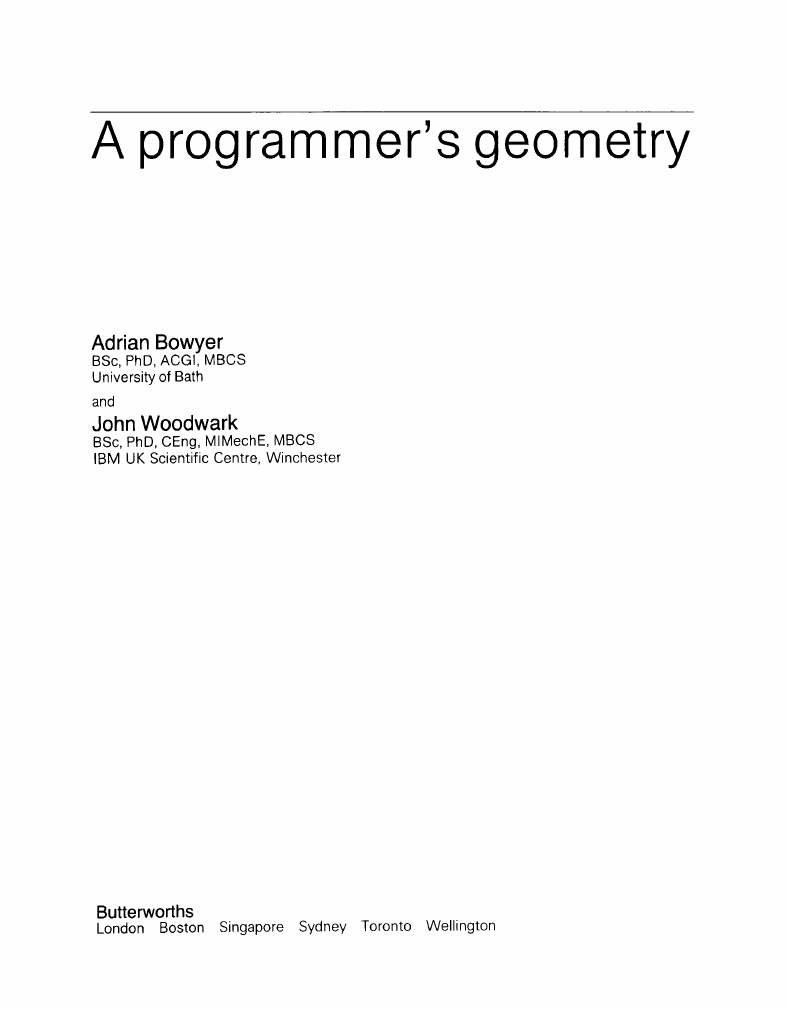
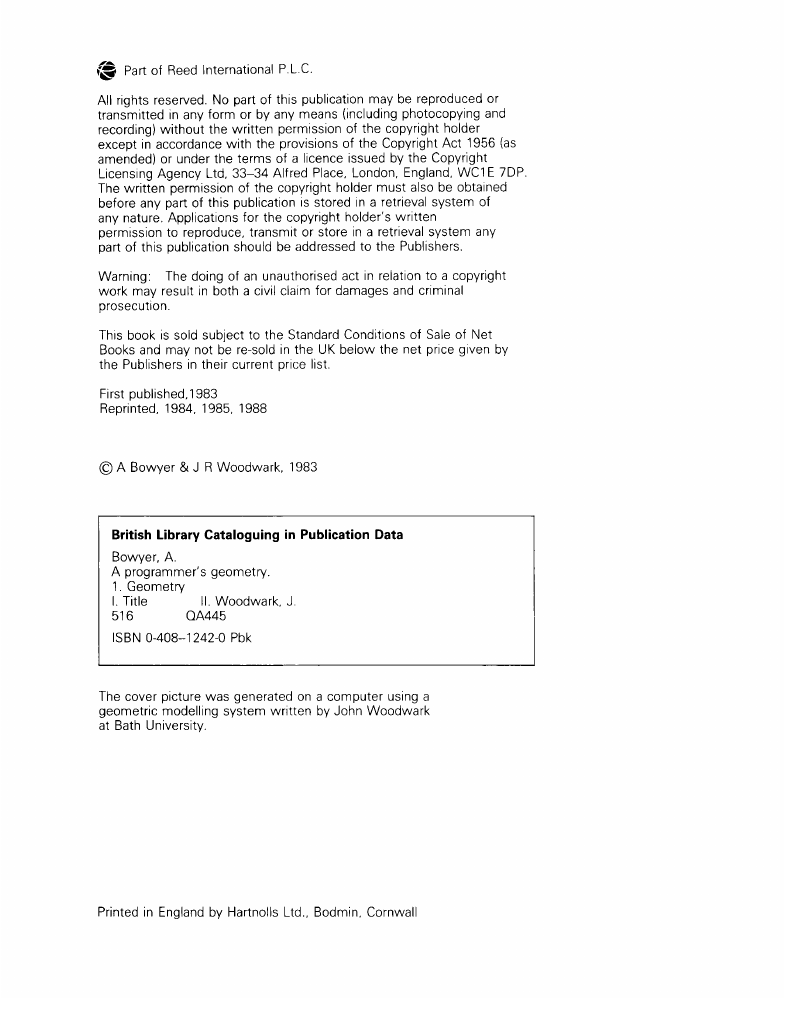
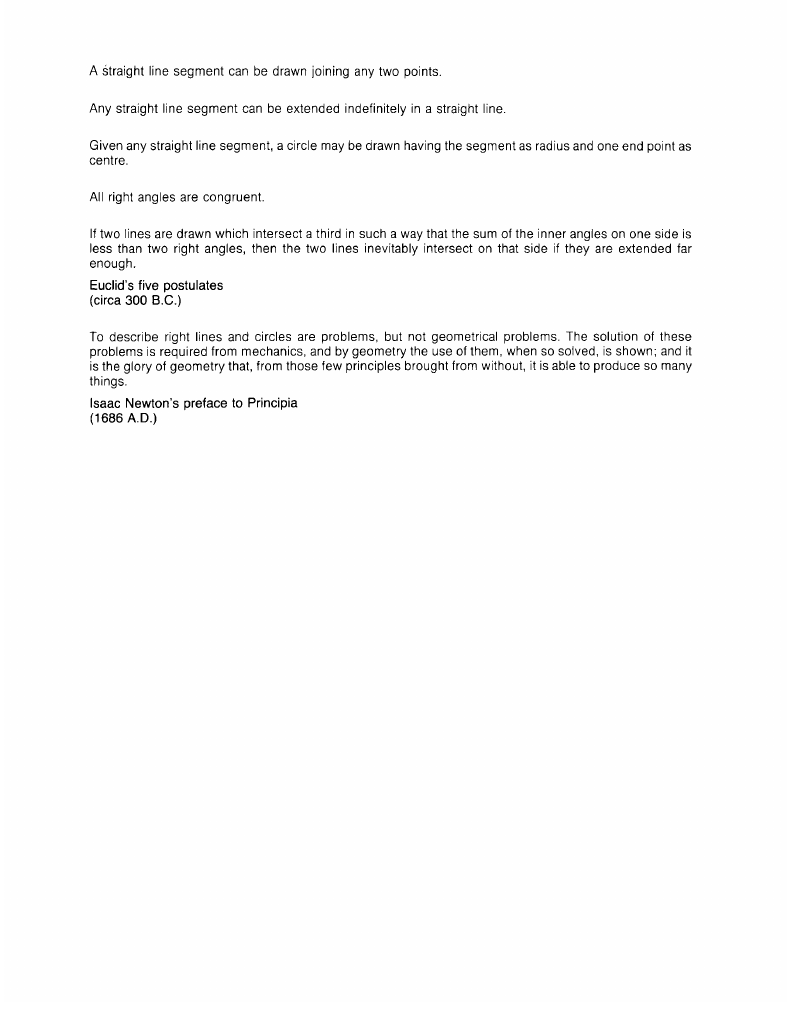
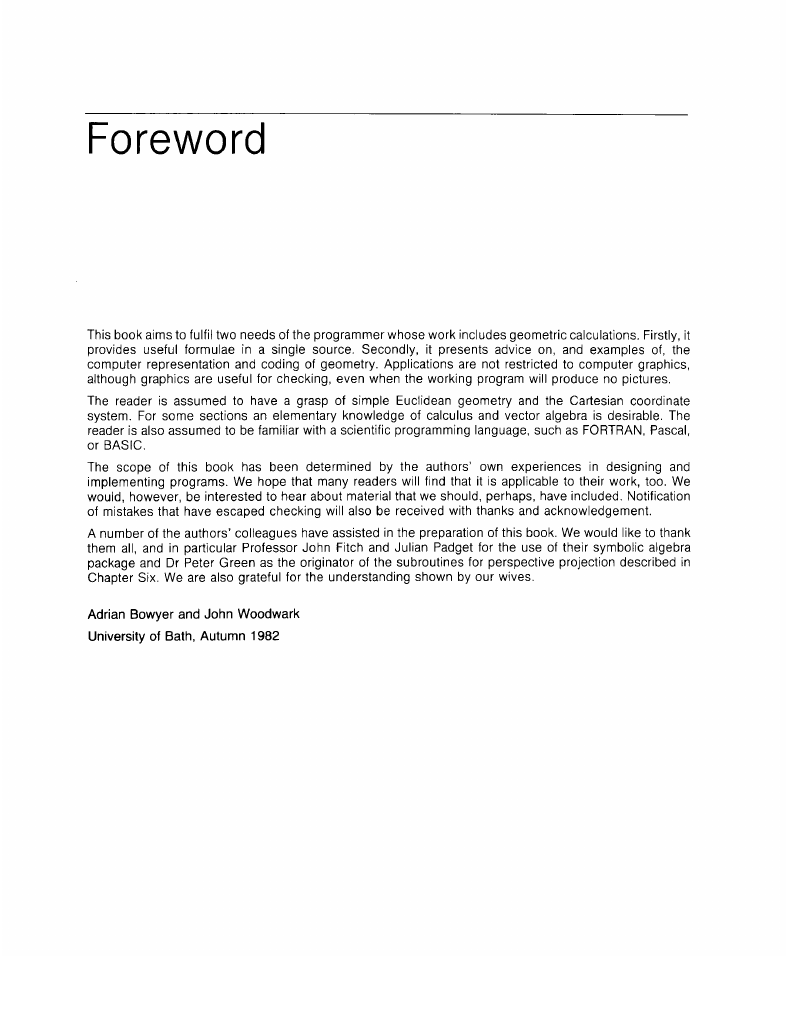
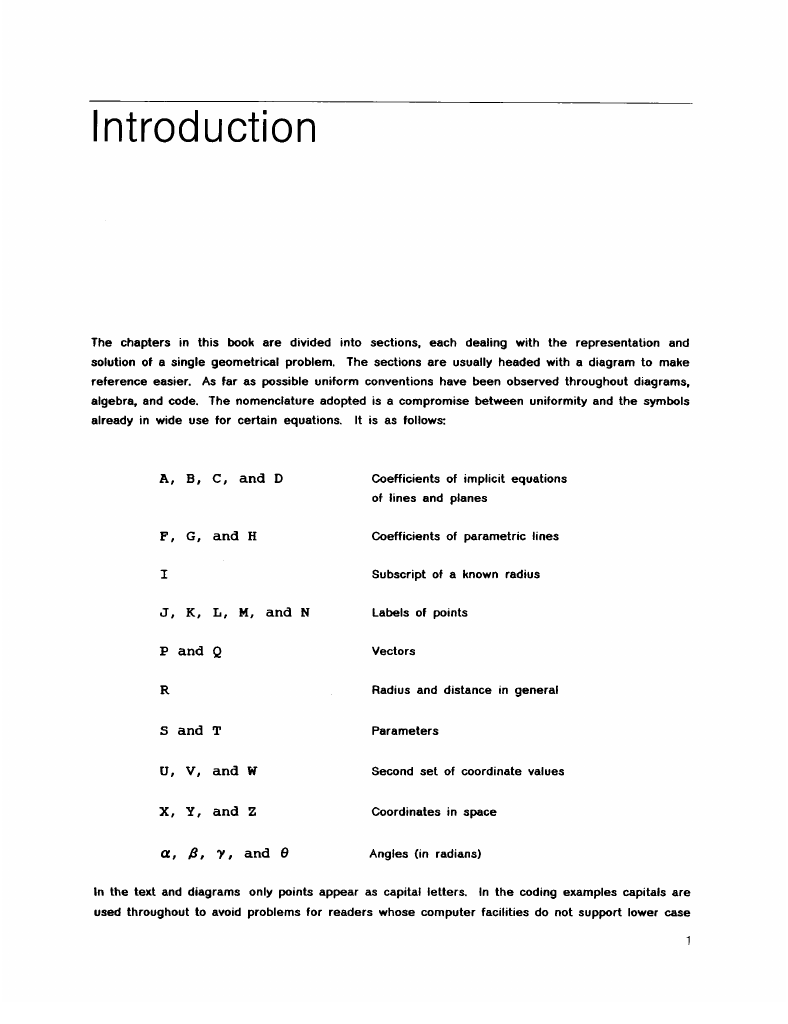

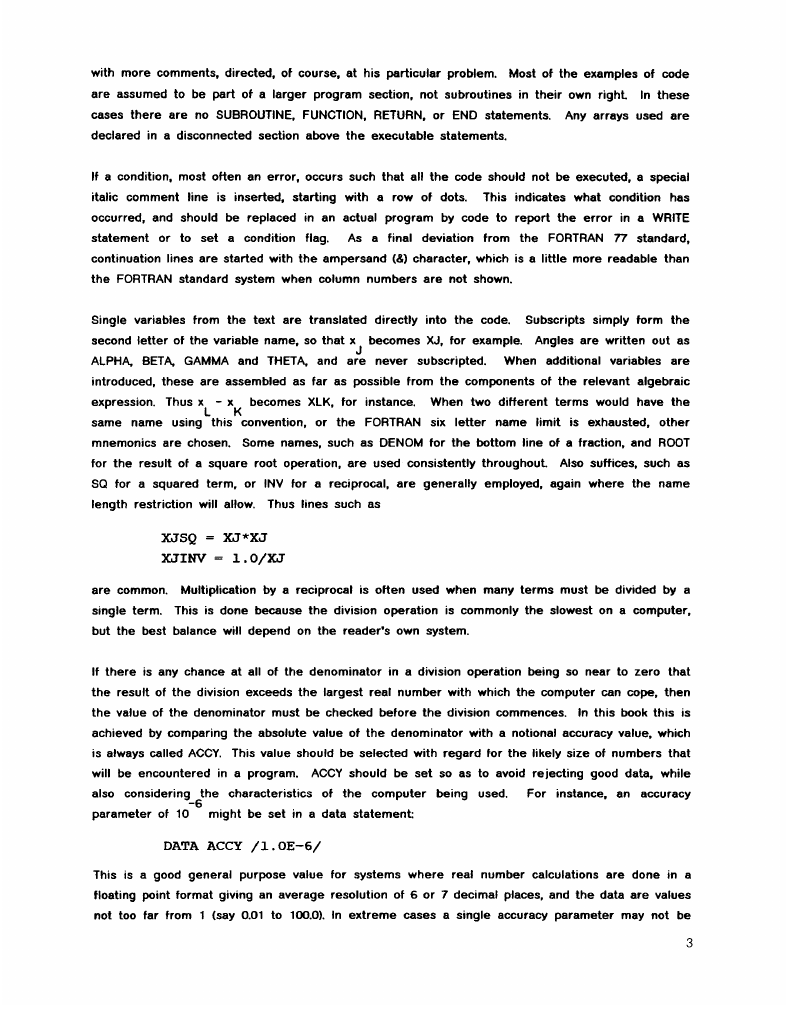
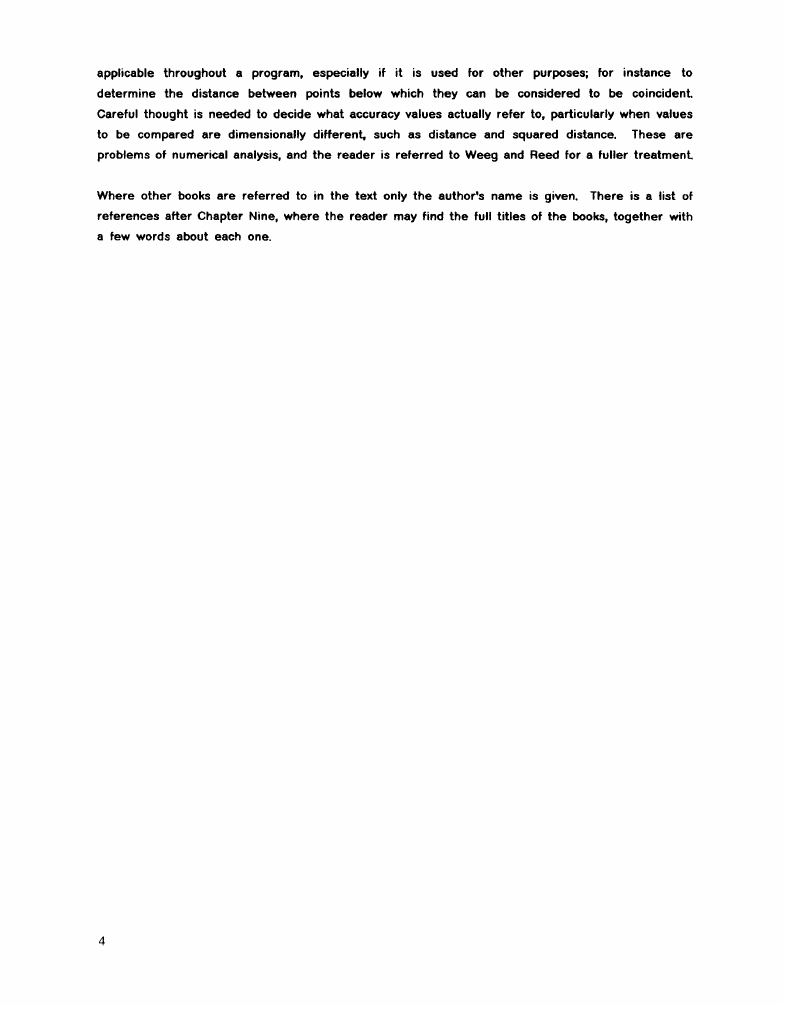








 2023年江西萍乡中考道德与法治真题及答案.doc
2023年江西萍乡中考道德与法治真题及答案.doc 2012年重庆南川中考生物真题及答案.doc
2012年重庆南川中考生物真题及答案.doc 2013年江西师范大学地理学综合及文艺理论基础考研真题.doc
2013年江西师范大学地理学综合及文艺理论基础考研真题.doc 2020年四川甘孜小升初语文真题及答案I卷.doc
2020年四川甘孜小升初语文真题及答案I卷.doc 2020年注册岩土工程师专业基础考试真题及答案.doc
2020年注册岩土工程师专业基础考试真题及答案.doc 2023-2024学年福建省厦门市九年级上学期数学月考试题及答案.doc
2023-2024学年福建省厦门市九年级上学期数学月考试题及答案.doc 2021-2022学年辽宁省沈阳市大东区九年级上学期语文期末试题及答案.doc
2021-2022学年辽宁省沈阳市大东区九年级上学期语文期末试题及答案.doc 2022-2023学年北京东城区初三第一学期物理期末试卷及答案.doc
2022-2023学年北京东城区初三第一学期物理期末试卷及答案.doc 2018上半年江西教师资格初中地理学科知识与教学能力真题及答案.doc
2018上半年江西教师资格初中地理学科知识与教学能力真题及答案.doc 2012年河北国家公务员申论考试真题及答案-省级.doc
2012年河北国家公务员申论考试真题及答案-省级.doc 2020-2021学年江苏省扬州市江都区邵樊片九年级上学期数学第一次质量检测试题及答案.doc
2020-2021学年江苏省扬州市江都区邵樊片九年级上学期数学第一次质量检测试题及答案.doc 2022下半年黑龙江教师资格证中学综合素质真题及答案.doc
2022下半年黑龙江教师资格证中学综合素质真题及答案.doc